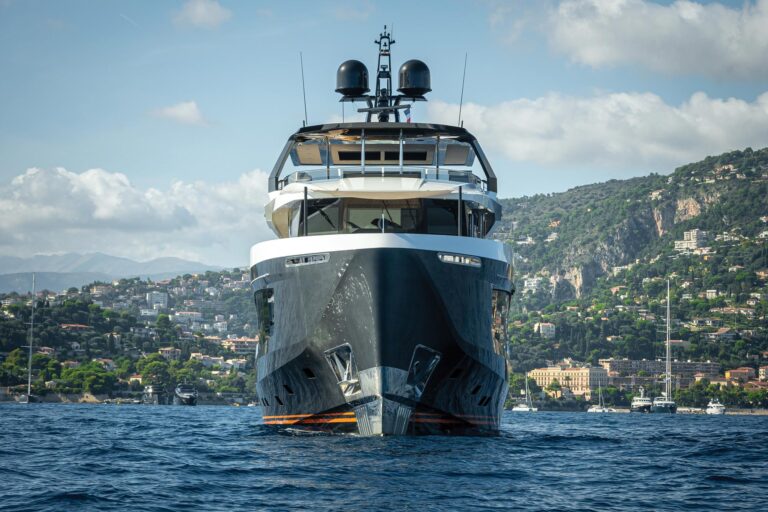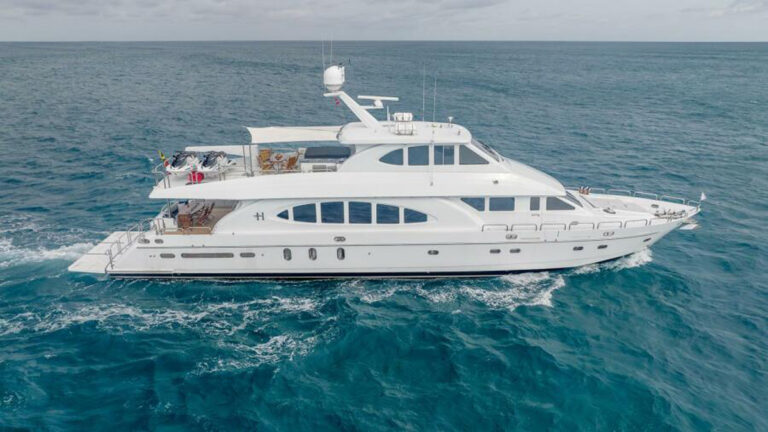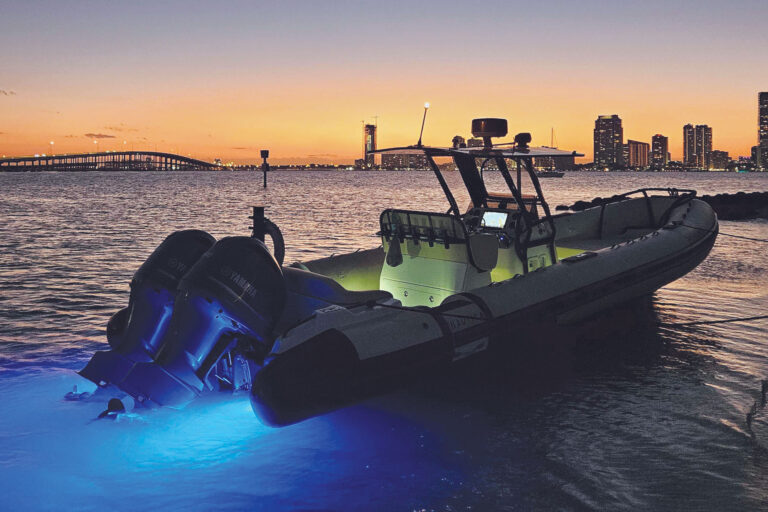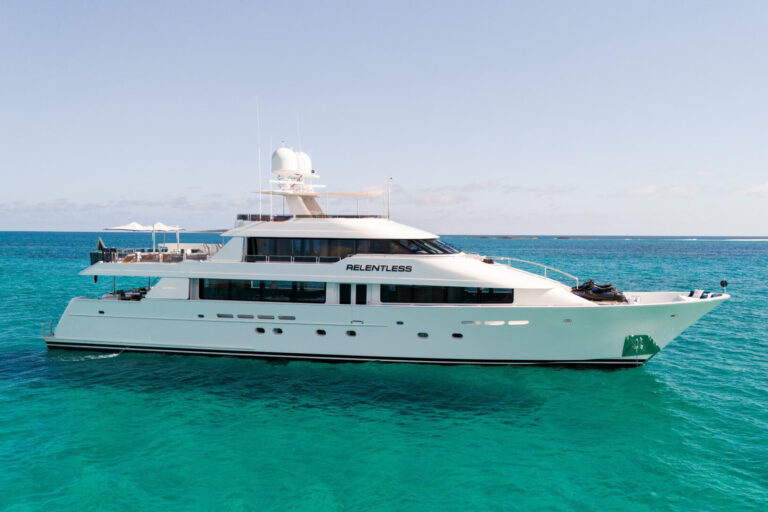September 19, 2005, was one of those glorious days that the Pacific Northwest sees in the fall: calm, clear and still. Bill Harris, an engineer from Springfield, Ore., had been on the coast salmon fishing. When he heard that albacore were feeding, he called his fishing buddy Jim Parker, and headed to Winchester Bay to meet up with a charter boat. Richard Oba and his 38-foot Bertram, Sydney Mae II, were waiting. With one other fishing client-a regular from Idaho, Paul Turner-and Oba’s bookkeeper, Ginger Strelow, the party headed out the Umpqua River.
By now, you may have heard the story: 13 hours later, the Sydney Mae II was rolled by a 12-foot wave as it approached the Umpqua River bar. Harris and Strelow’s bodies washed ashore. Turner’s body would never be found. Parker and Oba were pulled from the waves as they clung to a Type 1 life jacket that had floated by them.
While Oba had a Type V inflatable PFD built into his coat, none of the others had a life jacket or had even been told where to find one, claims Parker. In January, following an investigation by the National Transportation Safety Board, Oba was charged with three counts of seaman’s manslaughter under a seldom-used statute that dates back to 1838:
Every captain, engineer, pilot, or other person employed on any steamboat or vessel, by whose misconduct, negligence, or inattention to his duties on such vessel the life of any person is destroyed, and every owner, charterer, inspector, or other public officer, through whose fraud, neglect, connivance, misconduct, or violation of law the life of any person is destroyed, shall be fined under this title or imprisoned not more than 10 years
It’s not a law that gets invoked often, but it is one that all yachtsmen should be aware of. In 2004, a captain of a party boat plead guilty to seaman’s manslaughter after a teenager who had been served alcohol fell off the boat during a collision and drowned. In 2003, the assistant captain of the Staten Island Ferry collapsed at the wheel after taking painkillers, allowing the boat to crash into a dock and kill 11 people. He was sentenced to 18 months in prison, and his shore-based supervisor, to a year and a day. If convicted, Oba could face up to 30 years.
Most of the Winchester Bay regulars agree that Oba had no business getting near the Umpqua River bar that night. When the wind builds out in the Pacific, 12- to 14-foot waves crash into the sandbar that forms at the mouth of the Umpqua where the ocean floor rises from 50 to 25 feet. Teased by an ebb tide, these waves become unpredictable, angry masses of whitewater. The Umpqua is one of 14 bars in the Northwest to be rated as a “restricted area”-meaning the Coast Guard can ban uninspected vessels below a certain length if the conditions warrant.
On September 19, the bar had been restricted since about 4:00 p.m. Oba, who had repeatedly called the Coast Guard to see if it would lift the ban, says he had no intention of crossing and was just “taking a look” when a sneaker wave came over the transom. Oba later told The Oregonian that no one was wearing life jackets at the time because “conditions were not rough.”
Predictably, in the weeks following the accident there was an outcry for new laws. Bill Dwyer, a neighbor of Harris’ and a former Oregon state senator, published an editorial saying that anyone crossing an Oregon bar in a recreational boat should be required to wear a PFD.
Charter captains and many other mariners balked at this suggestion, though few will speak on the record until after the trial. As one Winchester Bay captain put it, “Just because one person speeds and has a car accident doesn’t mean you lower the speed limit. Just punish the speedster.” Others have pointed out that the regulations were there: The bar was closed, conditions were hazardous and in that situation, people should have been wearing life jackets. Oba, they say, was new to the area, having moved there from California; he didn’t understand the dangers of the bar, did not follow the law and should be prosecuted. “The bar can also be calm as glass,” one captain noted. “Should you be required to wear a life jacket if you’re out fishing on a calm day?”
The issue was actually debated before the accident. On July 11, 2005, the Umpqua River Coast Guard held a meeting with the charter captains in Winchester Bay to go over safety procedures, life-jacket regulations and bar restrictions. The meeting came just a week after the NTSB published a final report on the sinking of another Oregon fishing boat, the Taki Tooo. An inspected vessel carrying 19 passengers, the Taki Tooo went down while trying to cross the Tillamook Bar in rough waters on June 14, 2003. Passengers had been shown where the life jackets were but not asked to wear them. Of the eight who survived, six were wearing the big orange Mae Wests. Of the 11 who died, only one was wearing a life jacket.
In the meeting, the Coast Guard passed on the recommendations of the NTSB report: 1) that the Coast Guard require passengers on small recreational boats to wear life jackets while crossing a bar; and 2) that captains adopt a written go/no-go policy for crossing the bar when conditions get rough. Oba was among those who disagreed.
It might be easy to dismiss mandatory life jackets as a local issue, peculiar to the Pacific Northwest where conditions can be so rough that the Columbia River bar has earned the nickname the “Graveyard of the Pacific.” But the life-jacket law also came up last October after a tour boat capsized in Lake George, N.Y., killing 20 of its elderly passengers. And just this past February, spurred in part by fatalities after a Baltimore water taxi flipped, a Maryland delegate introduced House Bill 140. In its original wording, it would have had adults, as well as children, wearing a life jacket whenever any recreational vessel was underway. That bill, recognized by most as extreme and unreasonable, was almost immediately shot down. “We educate people about the importance of life jackets, but we believe it should be a boater’s choice as to when to wear them,” says Maryland resident Margaret Podlich, the vice president of government affairs for BoatU.S., who helped rally the opposition.
The five people aboard the Sydney Mae II had that choice. Capt. Oba was wearing a Type V life jacket that he manually inflated. According to Bill Dwyer, his neighbor Bill Harris always fished with a float coat on-but when his corpse was found, waves had torn the clothing from his upper body. Harris and Parker both owned small boats and were not new to offshore fishing.
In the end, it may have been one Type 1 life jacket that ultimately saved two lives. After the second 12-foot wave capsized Sydney Mae II, the crew were thrown into the ocean. Oba’s life jacket didn’t automatically inflate-he had to take the coat off and blow in the tube to inflate it. He then swam to the hull and tried to free a life ring from the bridge, but it was too tangled in the rigging. Another life ring finally floated free and for a short time, Parker, Harris and Strelow were able to hang onto it before another wave scattered them. Meanwhile, Oba swam to the bow and struggled to deploy the life raft. It eventually floated free, Parker grabbed at the lanyard, and the life raft inflated. But in an instant it was gone, swept out of his grasp by the wind. He was able to grab one of the boat’s Type 1 PFDs, however, as it floated by and he and Oba clung to that in the dark.
Ashore, fishermen had been listening to the VHF dialogue between Oba and the Coast Guard and watching the Sydney Mae II from a lookout point. A little after 8:30 p.m., they heard a boom that may have been the raft inflating. They saw the raft’s strobe blinking in the dark and called the Coast Guard.
Within 30 minutes, a 47-foot Coast Guard motor lifeboat was on the scene and found the empty life raft. Chief Ward Halstead began firing flares into the night. “As one flare went up, I saw a reflection,” he remembers. “Type 1 PFDs have 144 inches of reflector tape and that’s what we saw.” Minutes later, he and his crew pulled Oba and Parker from the 53-degree water, still clinging to the life jacket.
Mariners may disagree over when to put on PFDs, but one fact seems incontrovertible. As Coast Guardsmen repeat over and over: The biggest factor in who lives after an accident is who was wearing a PFD. Or as Chief Halstead put it, “We rarely find corpses in life jackets.”
Building a Better PFD
In 1993, 83 percent of people who drowned in a boating accident were not wearing life jackets. By 2004, that number had risen to 89 percent. After hosting a series of focus groups, the BoatU.S. foundation found three key reasons why people don’t wear life jackets: 1) They don’t perceive a risk. 2) Jackets are uncomfortable. 3) Jackets cost too much. So the foundation put up $5,000 for the first Innovation in Life Jacket Design Contest and received 182 entries. Winner Adam Malcom, a grad student at the University of Virginia, created a belt that, when activated, shoots up supporting air bladders around your torso, allowing you to float as in an inner tube (top image). Honorable mentions included Baltimore native Mario Di Florte’s Aqua Aid, a vinyl float that’s packed into a wrist case (middle), and stylish inflatable shirts (below) from Pittsburgh designers Lisa Ma, Wayne Chang and Peter Tong. Criteria included wearability, reliability, cost and innovation. Notably absent was the need to adhere to current regulations. Says Margaret Podlich of BoatU.S., “We wanted people to think outside the box.”









